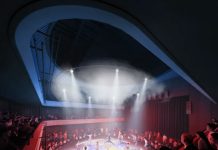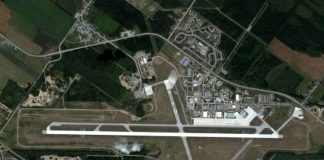Windows and energy savings: The weakest link in Canadian buildings
Canadian Design and Construction Report staff writer
Where is the weakest point in energy savings in Canadian buildings?
John Straube, a University of Waterloo engineering professor, indicates that windows, even ones marketed for their high-efficiency – leak energy at an incredible rate, and less-than-perfect fenestration solutions could defeat other energy-saving efforts, including wall and ceiling insulation.
“What’s really damning is that older buildings, built well before the Second World War, are pretty good in terms of energy consumption,” he told the annual Construction Specifications Canada (CSC) conference in Kitchener in May.. As an example, the university’s School of Architecture building, constructed in the early 1920s, uses “significantly less energy than the average.”
“The walls are made of solid masonry,” he said. “There are decent windows – but not too many of them.”
Yet the building is “filled with natural daylight.”
Compare this construction to modern, mass-market urban condos in Toronto, with floor-to-ceiling glass curtain wall facades.
These may look nice, and help sell the condos, but the owners will be stuck with the energy bills – and possibly hefty maintenance charges – for years and years.
Straube, in an earlier CBC interview, said a building is a living, breathing thing, enclosing and protecting the people who live inside. “Building with glass walls is to miss the main point of a building . . . sacrificing the protection that is a building’s first duty for a beauty that is only skin deep,” CBC reported.
“It’s almost derogatory in my world to forget about everything else that’s part of experiencing a building,” Straube was quoted as saying. “I like to think what is the building going to be like on a dark and stormy night. In our climate, particularly, we care about that. It’s life and death.”
Simply put, he told the national CSC conference, many commercial buildings have really “poor enclosures” with exceptionally low insulation R-values, caused by “too much glazing, too many thermal bridges, and too much air leakage – which no one seems to measure.”
Meanwhile, heating and ventilation systems have been designed with super-efficient equipment, but “the systems are often very inefficient.”
The result, windows, even with double-glazing, often have absurdly low R-values, perhaps at 2 or maybe 3.
If these window systems dominate the building, even the best insulation within the walls won’t do much to solve the problem as thermal bridging gobbles up wall and ceiling insulation value.
For example, if wall systems have an R20 level (over 50 per cent of the area), and there are R2 windows covering the other 50 per cent, the overall building insulation value is just R3.6.
Assuming really good windows are installed, with an R4 value, then the building gains some ground, but the overall insulation factor remains what would seem to be a dismally low R6.6.
“Windows are expensive (in terms of energy loss),” he said. The cheapest solution is to reduce the area dedicated to them. If the window area is reduced to 31 per cent (with an R2 value) you would have an overall R rating of 5.3. If you do the same with energy efficient R4 windows, you could reach R8.9 overall.”
“You make trade offs in design,” he said. “You make intelligent choices about how you spend your money.”
There are other issues, he said, with curtain window walls. As much as they leak heat in the winter, they absorb heat from the sun in the summer, creating truly heavy air conditioning loads.
He said buildings built by investor-owners, rather than for quick resale to condo purchasers, are being built to a higher standard.
There are solutions, he said, including solar control glass, including thermo/electronic systems that control the light intensity, and interior and external shade and blind systems.
“Curtain walls have very poor thermal comfort performance,” Straube said. “Specifying better products and reducing (window) area reduces costs and significantly improves performance.”
“Higher industry performance should and will be demanded for our buildings,” he said. “Windows are the last big hole we have to fix.”












Hi – I’m curious to know if there has been any testing done with Proloft aerogel insulation installed in the thermal bridge areas in window systems to date.
Thank you
Jesse Ewing